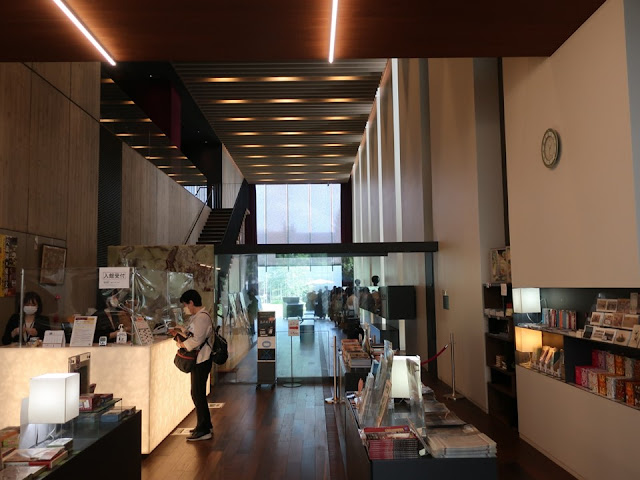Toyo Bunko (The Oriental Library) is a library and research institute to study Asian history and culture, which has around ninety years history. Its atmosphere relaxes visitors.
The entrance is spacious and there is a lawn courtyard and a café behind it.
ゆったりしたエントランス。奥は庭園とカフェです。
On the second floor, there is Morrison’s Stacks which I wanted to go. I felt I became an intelligent person while sitting on a sofa in it. It is an irresistible space for book lovers.
二階に上がると、モリソン書庫。お目当ての場所です。ソファに座ると、賢くなった気がしました。本好きにはたまらない空間だと思います。
They have a themed exhibition, in which their books are displayed. When I visited, it was “A History of the Japanese Language”. Just check the current exhibition on their website below.
展示は、テーマを決めた蔵書の紹介です。訪問時は「日本語の歴史展」でした。最新の展示はホームページでご確認ください。
Visited in September, 2022
Official website: http://www.toyo-bunko.or.jp/toyobunko-e/index.php
http://www.toyo-bunko.or.jp/ (in Japanese), accessed in March, 2023
Appendix、Seikado Bunko Art Museum、静嘉堂文庫美術館
Both of Toyo Bunko and Seikado Bunko were established by Iwasaki family who are founder of Mitsubishi Group.
東洋文庫は三菱の三代当主岩崎久彌が1924年に創設しました。丸の内には岩﨑彌之助(二代目)とその子小彌太(四代目)が創設した静嘉堂があります。
It is in Meiji Seimei Kan, which is in front of the palace.
静嘉堂は、皇居の前、明治生命館の一階にあります。
We can take photos only in the hall above, which is surrounded by exhibition rooms.
ホワイエのみ撮影可能です。展示室は、ホワイエの周辺にあります。
They only have a special exhibition, so please check the current one on their website below. When I visited, it was about a girls’ festival (Ohinasama) which is held on the 3rd of March.
こちらは特別展のみなので、ホームページで展示内容をご確認ください。訪問した日は、お雛さまの展示でした。
Visited in February, 2023
Official website:https://www.seikado.or.jp/english/
https://www.seikado.or.jp
(in Japanese)
Previous post (museum in Tokyo): Bunkyo Museum、文京ふるさと歴史館
Next post (museum in Tokyo): Sumida Heritage Museum、すみだ郷土文化資料館







Comments
Post a Comment